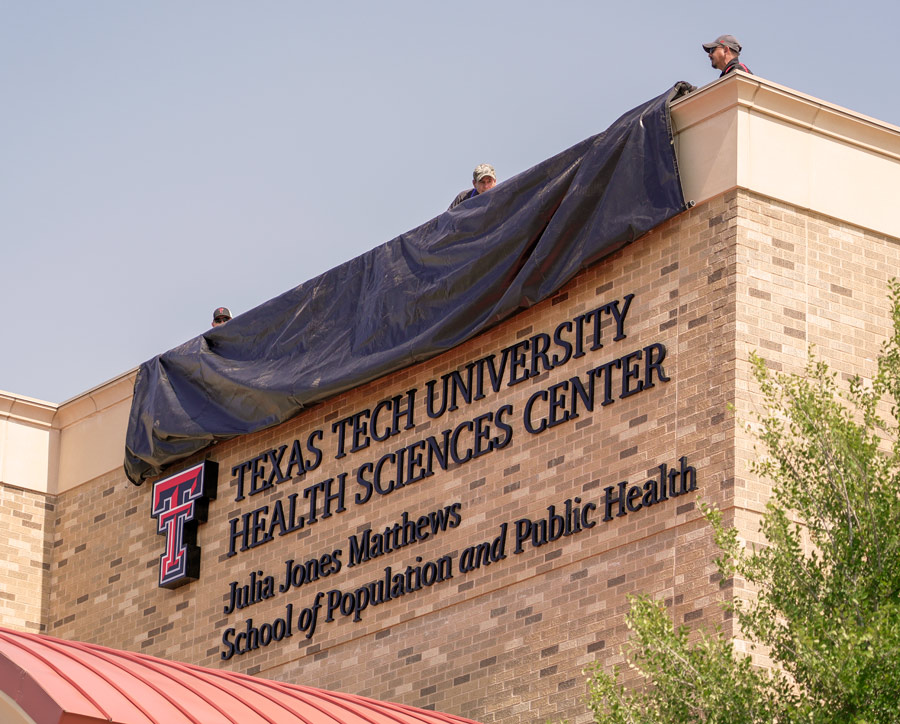New Kid on the Block



New Kid on the Block


“I fell in love with the mission of public health,” she said. “I didn’t initially choose public health, but public health has a way of choosing you.”
As she ascended the career ladder — health programs manager, assistant director and now director of health services for the city — she realized that if she paired her experience with more formal education, she could supercharge the work she did.
In 2017, Lerma enrolled in TTUHSC’s Master of Public Health (MPH), an experience that expanded her vision of what might be possible. “I had worked in public health for 16 years, but I hadn’t had much exposure to things like epidemiology and biostatistics,” she said. “I realized that there was so much more that we could do to have an impact on our community’s health.”
The lessons have led her to make real changes: The city now does active surveillance for influenza, collects and analyzes data on emergency department visits, and has added staff members, including two epidemiologists and a data analyst.
GET SCHOOLED
IT’S TIME TO BUILD THE PIPELINE
INCREASING OPPORTUNITY
ABC’s of Current Degrees
The Julia Jones Matthews School of Population and Public Health opened in May with ambitious future plans.
Already in place at the school is the Department of Public Health with a robust group of degrees. This includes traditional and online MPH degrees and three dual-degree programs: a public health master’s degree paired with a degree in public administration (MPA/MPH), medicine (MD/MPH), or pharmacy (PharmD/MPH). The school also plans to add both new concentrations and doctoral programs in the field.
In the coming months and years, the school also will launch additional programming within a Department of Population Health, including degrees in informatics. An already-robust data resource laboratory will be expanded and strengthened to support the data-intensive work of population health.

As the last few years have made abundantly clear, making progress on that mandate could hardly be more urgent.COVID-19’s appearance offered a crash course in public health — the science of creating safer, healthier communities through education, policymaking and research. Before the pandemic, there had been many significant public health developments, including the eradication of smallpox, control of many childhood infectious diseases through vaccination, policies in support of clean air, water and food, and the increase in lifespan in the U.S. from age 42 in 1900, to about 80 now.
Population health, includes similar disciplines as public health, but is increasingly focused on data that can help to transform the health care system. Likewise, population health researchers use large data sets to understand the nuances of health outcomes such as heart disease or cancer among different populations.

The need for both population and public health researchers to work together to solve these issues is particularly acute in West Texas, said Theresa Byrd, DrPH, chair of the Department of Public Health in the Julia Jones Matthews School of Population and Public Health.
Compared to urban populations, for example, the rural populations of West Texas have long struggled with higher rates of Alzheimer’s, cancer and many other chronic diseases.
In addition, health care access can be limited. “Using the ideas of population health to look creatively at the data from these populations to understand what’s happening can help those of us in public health to develop the policies necessary to improve health care for these folks,” Byrd said. “The two sides will work together on these problems.”
Faculty and alumni in the field are eager to tackle big problems in meaningful ways with the support of the new school and its students.

Chris O’Dell, MPA, MPH, (Biomedical Sciences ’18), director of clinical operations for TTUHSC’s School of Medicine Department of Ophthalmology, says he’s experienced the need on both sides firsthand. As a student, O’Dell was thrilled to have the opportunity to work on a mental-health related assessment with a local jail while he was earning his dual degree. Today, he relishes the idea of adding student brainpower to work on larger projects and research ideas linked to population and public health.
“There are a million things we would love to do in clinics that we just can’t do because of a lack of workforce,” he said.
Lerma, meanwhile, sees the school as part of a powerful flywheel that can train more experts and fuel changes that could make West Texas a healthier place for everyone to live.

When TTUHSC planted the seeds for today’s school years ago by launching a master’s degree in public health, institutional leadership could not have predicted that a pandemic would upend the world and put a white-hot spotlight on the value of — and challenges with — population and public health.
The Julia Jones Matthews School of Population and Public Health was always on the university’s roadmap, yet the institution is determined now more than ever to harness the increased attention on the field, said Darrin D’Agostino, DO, MPH, MBA, TTUHSC provost and chief academic officer.
“We think the population and public health school is a ribbon that can tie together all of our schools.”




While the new school is just getting off the ground, D’Agostino believes the population- and- public- health–infused approach to health care education could be nothing short of transformational.
“TTUHSC is leading the new model of education to include population and public health, one of the most important aspects of health,” he said.
“The next generation of health care providers and health care leaders will need to be deeply connected to the needs of communities through population and public health. That’s what we’ll be doing at TTUHSC.”
Philips agrees. “At TTUHSC, we focus on innovating and collaborating to transform health care. This school is a step in that direction.”